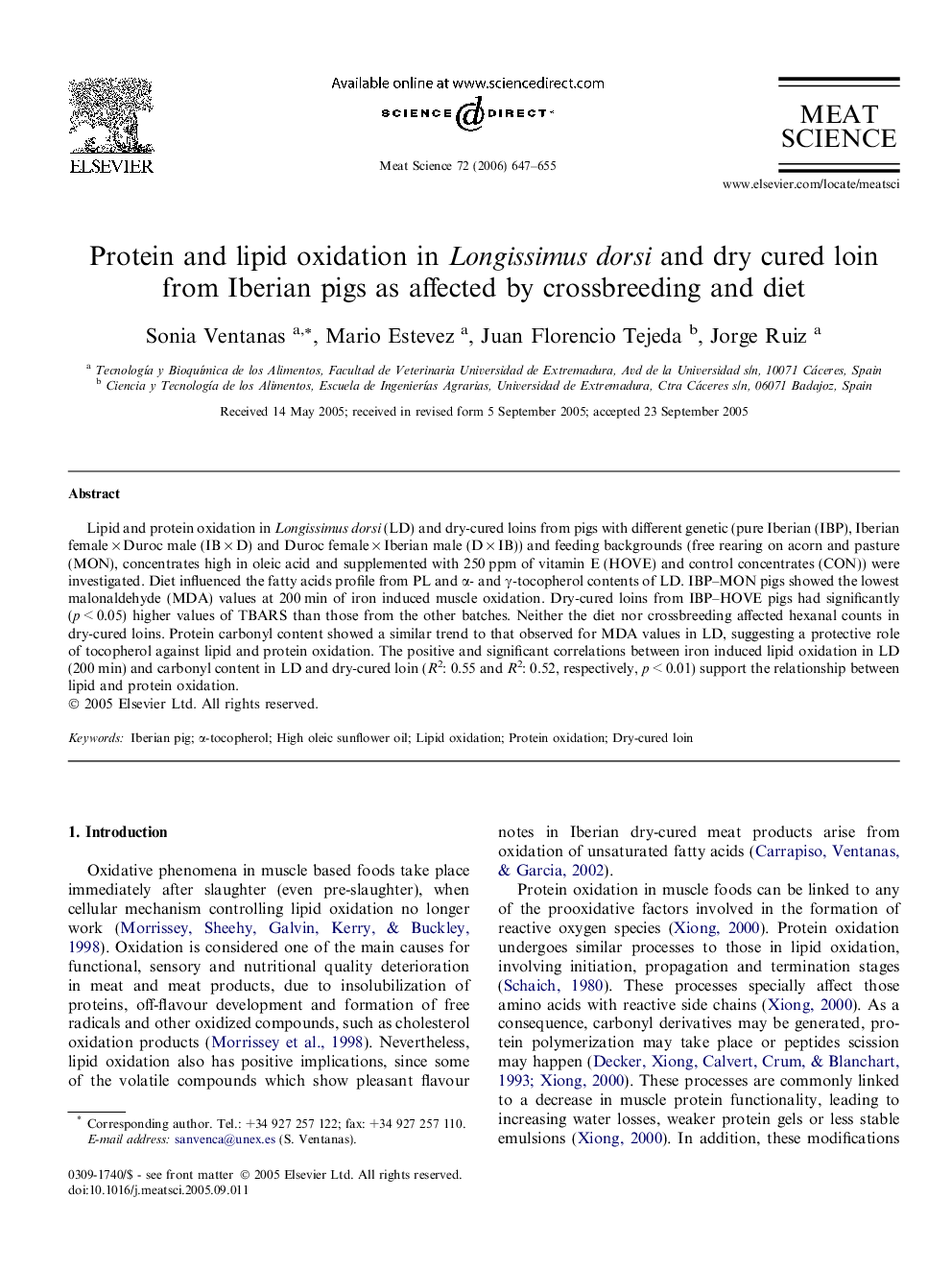| Article ID | Journal | Published Year | Pages | File Type |
|---|---|---|---|---|
| 2452270 | Meat Science | 2006 | 9 Pages |
Lipid and protein oxidation in Longissimus dorsi (LD) and dry-cured loins from pigs with different genetic (pure Iberian (IBP), Iberian female × Duroc male (IB × D) and Duroc female × Iberian male (D × IB)) and feeding backgrounds (free rearing on acorn and pasture (MON), concentrates high in oleic acid and supplemented with 250 ppm of vitamin E(HOVE) and control concentrates (CON)) were investigated. Diet influenced the fatty acids profile from PL and α- and γ-tocopherol contents of LD. IBP–MON pigs showed the lowest malonaldehyde (MDA) values at 200 min of iron induced muscle oxidation. Dry-cured loins from IBP–HOVE pigs had significantly (p < 0.05) higher values of TBARS than those from the other batches. Neither the diet nor crossbreeding affected hexanal counts in dry-cured loins. Protein carbonyl content showed a similar trend to that observed for MDA values in LD, suggesting a protective role of tocopherol against lipid and protein oxidation. The positive and significant correlations between iron induced lipid oxidation in LD (200 min) and carbonyl content in LD and dry-cured loin (R2: 0.55 and R2: 0.52, respectively, p < 0.01) support the relationship between lipid and protein oxidation.
